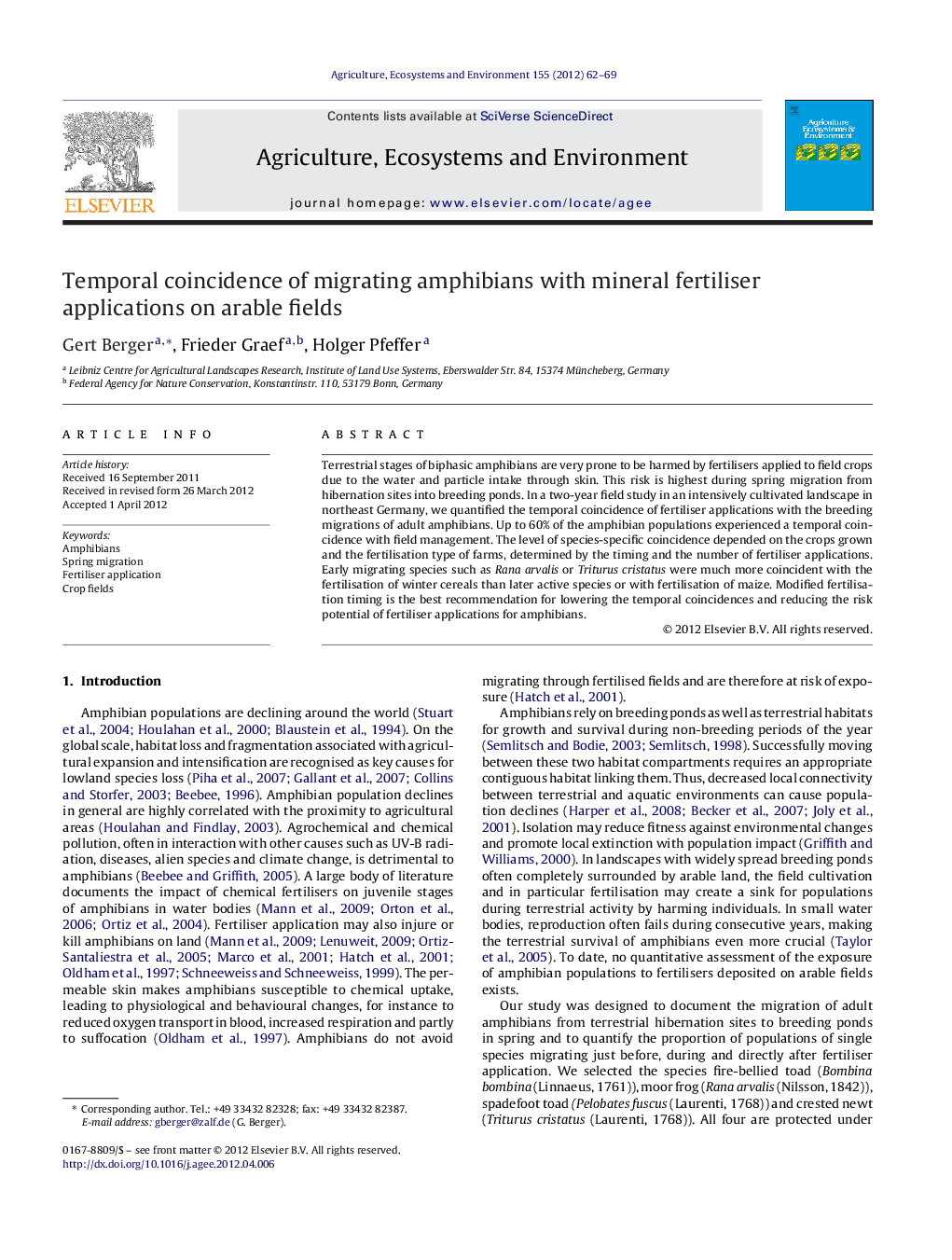| Article ID | Journal | Published Year | Pages | File Type |
|---|---|---|---|---|
| 2414561 | Agriculture, Ecosystems & Environment | 2012 | 8 Pages |
Terrestrial stages of biphasic amphibians are very prone to be harmed by fertilisers applied to field crops due to the water and particle intake through skin. This risk is highest during spring migration from hibernation sites into breeding ponds. In a two-year field study in an intensively cultivated landscape in northeast Germany, we quantified the temporal coincidence of fertiliser applications with the breeding migrations of adult amphibians. Up to 60% of the amphibian populations experienced a temporal coincidence with field management. The level of species-specific coincidence depended on the crops grown and the fertilisation type of farms, determined by the timing and the number of fertiliser applications. Early migrating species such as Rana arvalis or Triturus cristatus were much more coincident with the fertilisation of winter cereals than later active species or with fertilisation of maize. Modified fertilisation timing is the best recommendation for lowering the temporal coincidences and reducing the risk potential of fertiliser applications for amphibians.
► During migration up to 60% of the amphibians coincided temporally with fertilisers. ► Crops and fertilisation type of farms determined the species specific coincidence. ► Early species were highly coincident with fertilisation to winter cereals and rape. ► Fertilisation to maize showed low coincidences for all species investigated.
